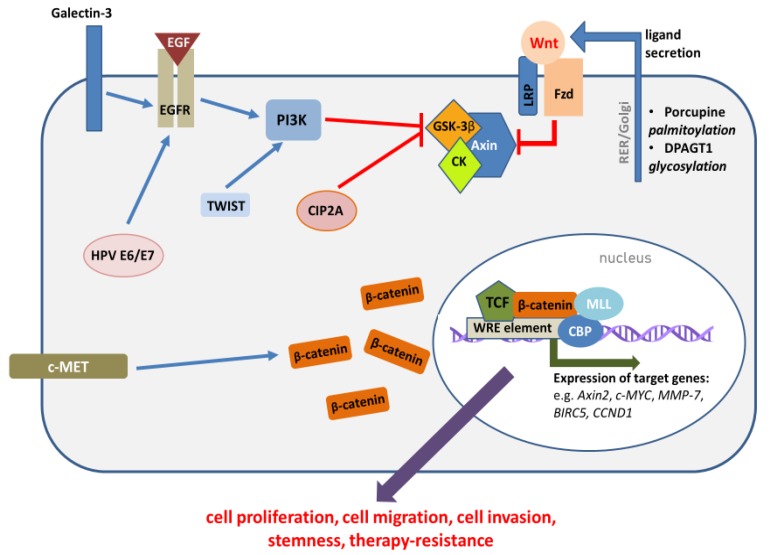Figure 2.
The activation of the canonical Wnt pathway in head and neck cancers is mediated by various factors. The synthesis of Wnt ligands is enhanced, which is related to the elevated activity of enzymes responsible for post-translational modifications—glycosylation and palmitoylation. The increased activity of Wnt ligands results from the reduced expression of extracellular Wnt antagonists. After secretion, Wnt ligands activate FZD/LRP receptors, which destabilizes the destruction complex, which can no longer phosphorylate β-catenin and stimulate its degradation. The destabilization of the destruction complex may also be mediated by the activation/overexpression of other molecular factors (e.g., EGFR, PI3K, c-MET, CIP2A), including HPV infection (details provided in the text). The resulting translocation of β-catenin to the nucleus activates TCF/LEF-mediated transcription of WRE-regulated genes, which relies on the cooperation with histone modifying proteins (MLL, CBP).

